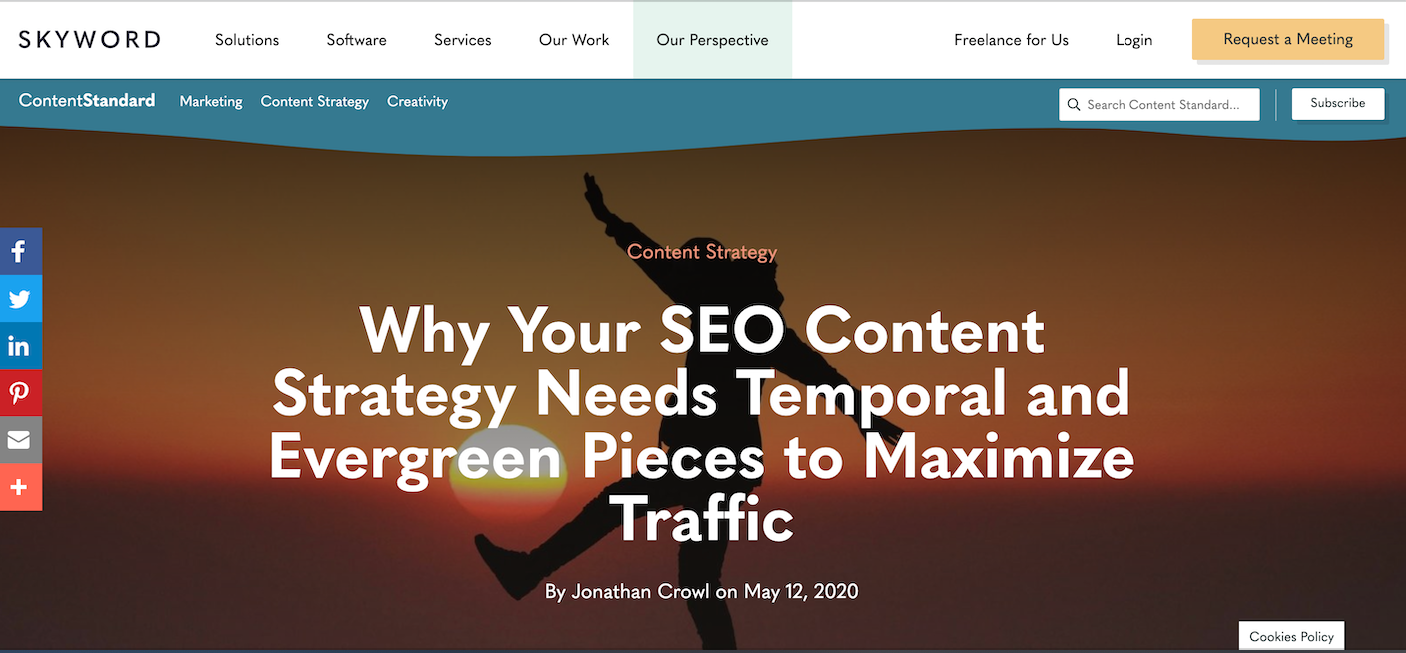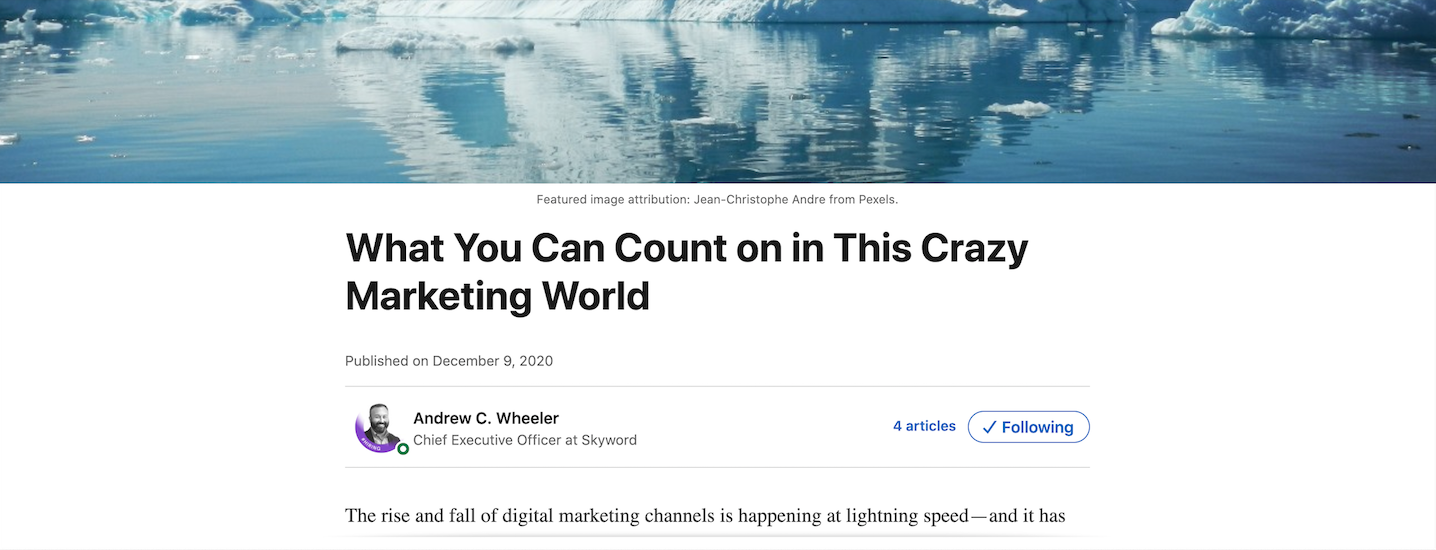Content Creation
10 Fresh Content Repurposing Strategies to Multiply Your ROI
By Jonathan Crowl on January 8, 2021
It takes efficient content management to maximize the value of your content creation. Even assets created with a specific goal in mind can continue to offer additional value over time, helping to populate content in multiple channels or to target new audiences.
Content repurposing is a practical strategy to maximize your content marketing ROI—and, because few of your brand's followers will see all or most of the content you create, repurposing doesn't risk damage to your brand. Efficient repurposing can help your marketing department:
- Extend the overall audience reach (and ROI) of individual pieces of content
- Reduce content waste within your organization
- Create more audience engagement while staying within a fixed marketing budget
- Capitalize on strong ideas and highly engaging content
- Build a strong, interconnected customer journey through a comprehensive, full-funnel marketing strategy
Whether you're publishing your first piece of repurposed content or already leveraging your existing assets in new ways, here are 10 great ideas to help you repurpose with purpose.
1. Build Infographics from Company Research or Reports
Infographics offer an entirely different form of engagement than research and other reports. They're easier to share on social media, putting them in a great position to promote other premium content, such as the eBook or research report that inspired the infographic.
The best way to leverage infographics is to create them alongside an original piece of premium content. This makes for a cohesive promotional strategy—one built to maximize brand visibility around your research and content creation. The following eye-catching infographic from Designmatic shows how an infographic can go beyond just conveying information to serve as distributable content in its own right, fit to be featured in a blog, on social media, or other content channels.
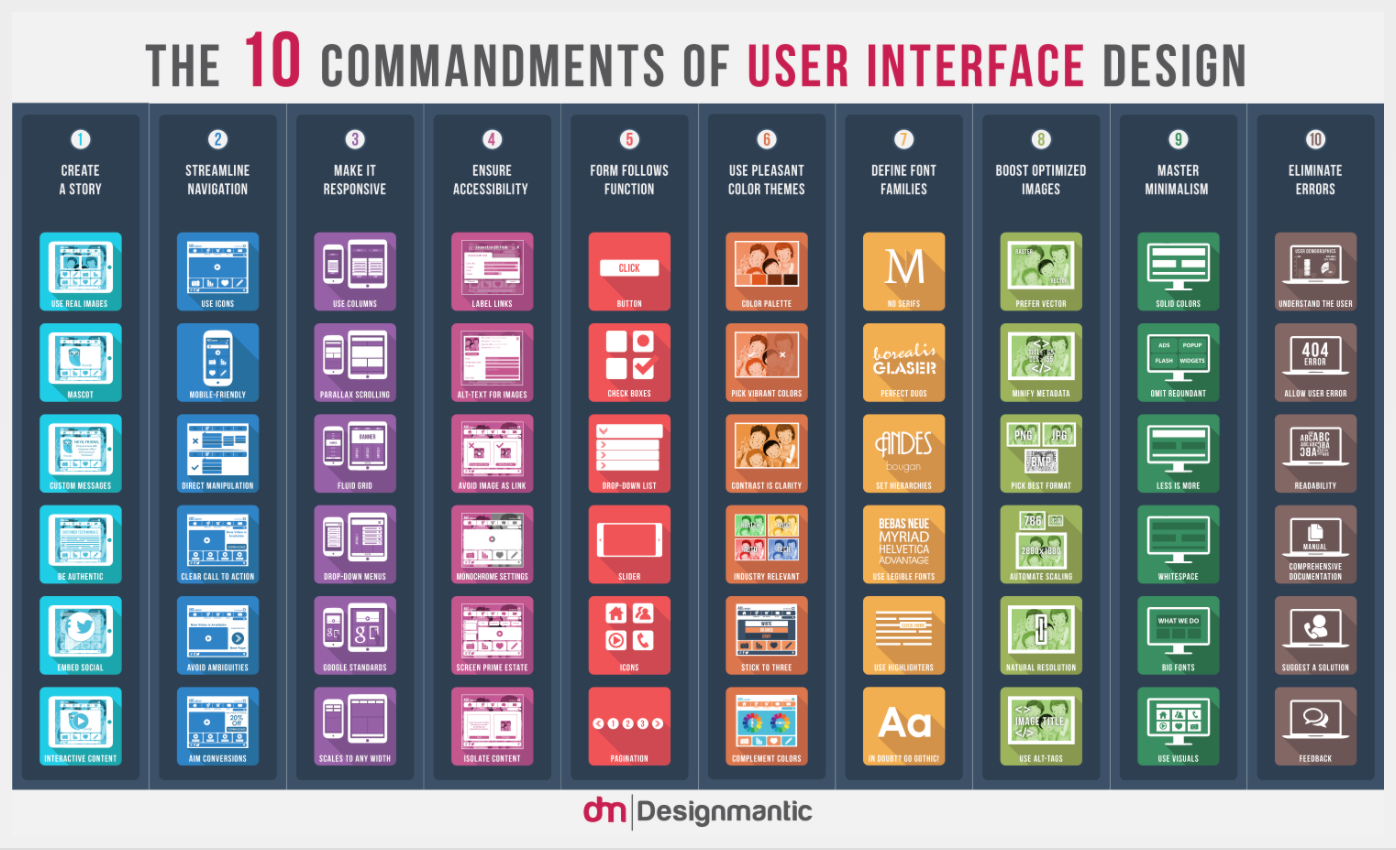
To facilitate sharing and maximize visibility, Designmatic also provided easy embed options for anyone looking to feature the infographic on their own blog or website.
2. Produce a Series of Blog Posts from a Single Webinar or eBook
Premium content is rich in valuable information. While you don't want to give away this information for free, you can use sections of this premium content to inform blog posts—which, in turn, can help promote the original content and build brand awareness through online search and social media.
The Content Standard employs this strategy all the time. One of Skyword's downloadable resources, The State of SEO 2020, inspired a blog post earlier this year on evergreen vs. temporal content creation. The data and charts from the study provided ready-made sources for an insight-rich article:
The blog article then gives interested readers a simple way to download the free, gated content.
3. Use Blog Content as the Foundation for Premium, Gated Content
In the same way that it's possible to use eBooks, white papers, and webinars as source material to generate related blog post content, you can also use successful blog content as a launching point for premium offerings.
Gated content needs to offer more information and value than your audience can find in an ungated blog. Readers expect this—and the nature of this relationship allows the blog to function as a funnel toward premium content (which may be accessible in exchange for filling out a lead-gen form). This can be a cost-effective way to maximize the value of high-performing content and help advance the client journey.
4. Collect, Share, and Reshare Positive Customer Reviews and Testimonials
Customer reviews are great assets. They cost you nothing to create, but they can serve a number of purposes. Testimonials and inspirational quotations can become graphic cards optimized for sharing on social media, for example. Reviews can also enhance blog posts and premium content, strengthening your brand's reputation.
5. Revive High-Performing and Evergreen Content
Your content management system should offer the functionality to flag certain content as evergreen. This makes it clear which content from your library can be successfully reused or republished later.
For example, posting high-performing content can add excitement to a social media feed even after its initial publishing. Old blog posts and sections of gated content that have proven popular or evergreen get opportunities to gain new traction when shared periodically on LinkedIn or other platforms. Linking this content within email newsletters sets even more of a foundation for page views to grow.
6. Cross-Publish Content to Social Media
This one is simple, elegant, and a bit of a gimme: cross-publish blog posts and other content to social media and content aggregation platforms at the time of publication. Skyword CEO Andrew Wheeler does this with his monthly newsletter, publishing to both The Content Standard and cross-publishing on LinkedIn:
This cross-publishing strategy maximizes the visibility of your content without affecting its SEO score.
7. Save and Repost Social Livestreams
Livestreams on Facebook, YouTube, and other social platforms provide opportunities to engage your audience outside of your typical content channels. But the value shouldn't end when the livestream comes to a close: instead, save that livestream to the broadcasting platform, and share it again as an archived piece of content.
This is a common strategy used with DIY video content, interviews, and other types of livestreams. NYT Cooking frequently uses livestreams—such as its The Big Lasagna livestream from earlier this year—to gather an audience around a cooking demonstration led by a famous chef.
After the conclusion of the livestream, NYT Cooking saved and shared it as a social video that continues to draw an audience more than six months after its publication, attracting more than 300K viewers between its original livestream and subsequent share online:
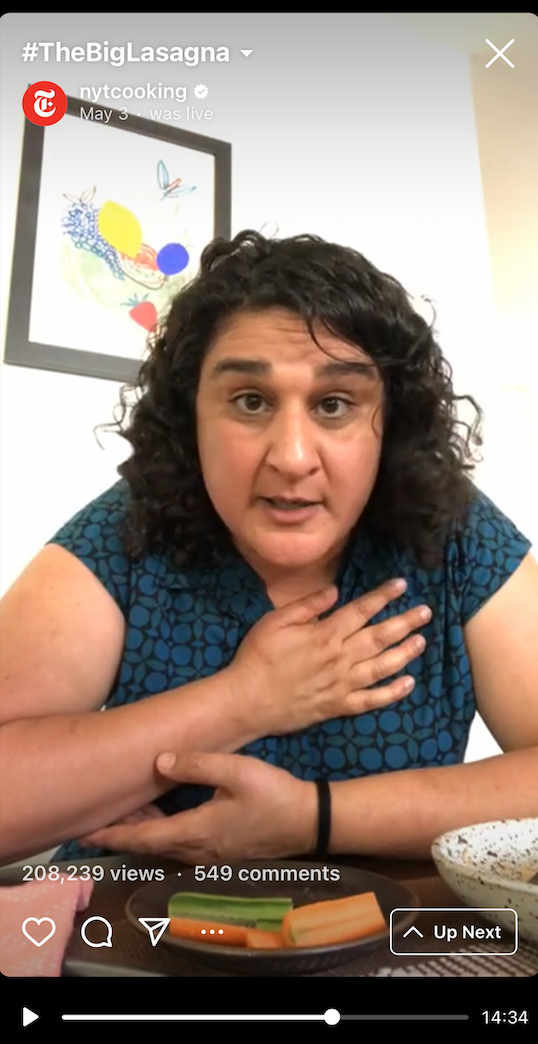
Saving the video to the original broadcast platform gives it a second life in blog posts and other content, expanding its reach and value after the initial livestream is over.
8. Turn Compelling Statistics into Visual Graphics for Social
In much the same way that testimonials can be a source of visual social content, interesting statistics—from your own research, case studies, or even external research relevant to your brand's offerings—make for an easy option to create and publish engaging visual content.
The LinkedIn post below, from web development company Wix, illustrates how images can quickly convey important, engaging data points that will be relevant to a target audience—in this case, e-commerce businesses:
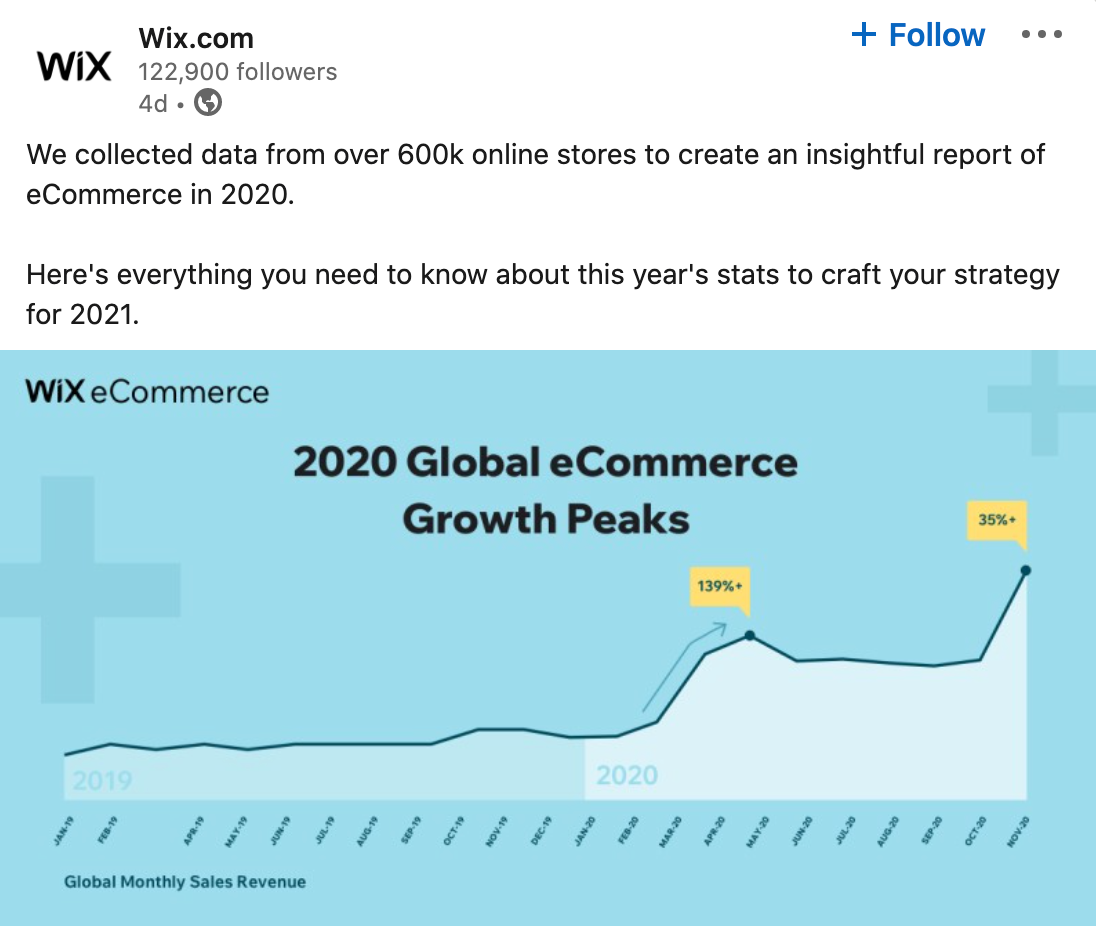
This content can link readers through to additional relevant content like blog posts and premium gated content. It can also prompt fresh industry-specific discussions in your social comments.
9. Share Premium Content (Like White Papers and Webinars) through Drip Email Campaigns
Premium content comes at a premium price—and assets like white papers and webinars can also play a crucial role in generating leads and closing new conversions. You can then share this content again via drip emails campaigns targeted to specific audience segments at specific stages of the buyer journey. Premium content can maintain a long shelf life across different marketing channels and platforms, giving it a broader return on investment and spreading out the cost of content creation. Don't count on customers finding it on their own, though: be aggressive in highlighting this brand-owned content.
10. Create Multiple Video Segments from a Single Video Production
Regardless of the kinds of videos you create—webinars, how-to videos, even TV commercials—this footage can help to create a variety of video segments and snippets. Ad content can be re-cut at different lengths, for example, and optimized for promotion via other channels, like social media. Divide longer videos into shorter clips that can be featured on your brand's YouTube channel, embedded into blog posts, and shared via email.
…and While You're at It: Use Existing Video Clips to Produce Branded GIFs
GIFs may not be for every brand, but they're a great way to inject a little fun into your brand experience. Plus, there's always a chance that a branded meme will gain traction on social media. Keep an eye out for opportunities in your video content to create and promote these homemade GIFs—they can add an interesting twist to your existing content experience.
The custom GIF below, created by fashion brand Oliver Bonas, is simple in design and, in fact, looks to be a repurposed segment from a fashion shoot video. The GIF features Oliver Bonas clothing on a model and was widely used on social media, on the company's website, and in its emails as a header image intended to catch the reader's eye:
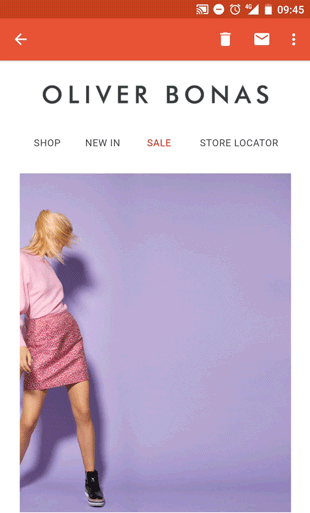
With content repurposing strategies in mind from the beginning, your marketing department has more opportunity to drive an increase in content creation and content engagement without increasing your marketing costs. By leveraging your existing content library and thinking creatively about opportunities to make use of it, your marketing team can set a new standard for generating marketing ROI.
Featured image by Singkham on Pexels.
For more stories like this, subscribe to the Content Standard newsletter.

